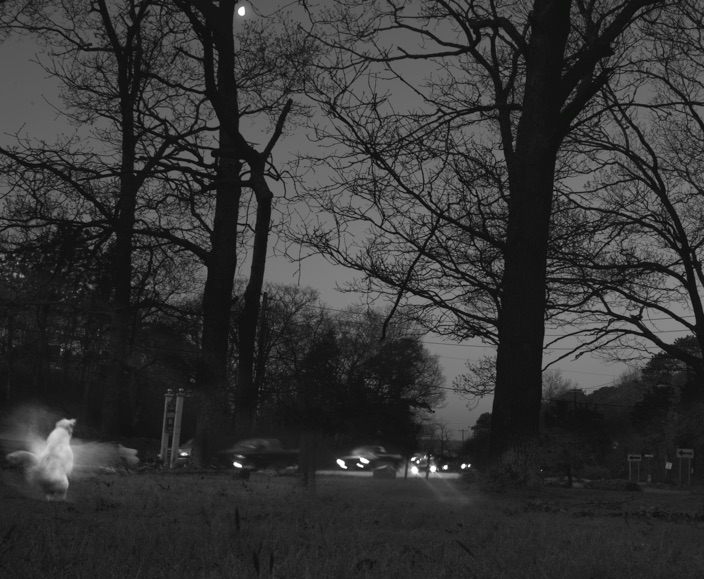Plein Air painter William Merritt Chase (above, right) was lured to Shinnecock Hills by the offer of a home for his family with a private studio designed by architect Stanford White. And a public studio for students nearby: where Chase founded the ”Shinnecock Summer School of Art, the first plein air school in the country. Patrons included real estate and railroad developers Austin Corbin, Charles Atterbury and Samuel L. Parrish. In exchange, the patrons promoted Chase’s reputation as an artist and teacher to attract land and railroad investors. And Manhattan residents to make the day trip on the LIRR that at the time transported farmer’s goods to market such as chickens, ducks and eggs the east end was famous for.

April 18 2006 commencing 5:40 am, from the study Shinnecock, spacetime
Variably sized Pigment Print on Cotton Rag 2006
copyright © 2021 Hope Sandrow all rights reserved
Shinnecock cock-a-doodling-do to passerby’s...on the road a half mile west of the landmarked William Merritt Chase home/studio within the Shinnecock indian contact period Village Fort Critical Environmental Area.

(above) Albert Chittenden, 1890 Chicken with Horse at the Chase Home; (r) William Merritt Chase with Shinnecock Hills Summer School of Art Students collection Hope Sandrow

The first automobile in the area noted (1899, The Corrector, September 16,1899 page 3, image 3): “A special train of the LIRR for horses and carriages will be run on Sept 19, 22, and 26 for L.I. City leaving Amagansett at 6:45 am and stopping at all stations west to Amityille. Horses and carriages should be delivered at least one hour before the train leaves.
The first automobile went through this town this week from Southampton to Wainscott. It was owned by James L. Breese.”
